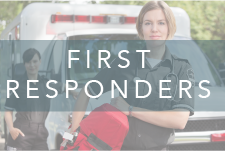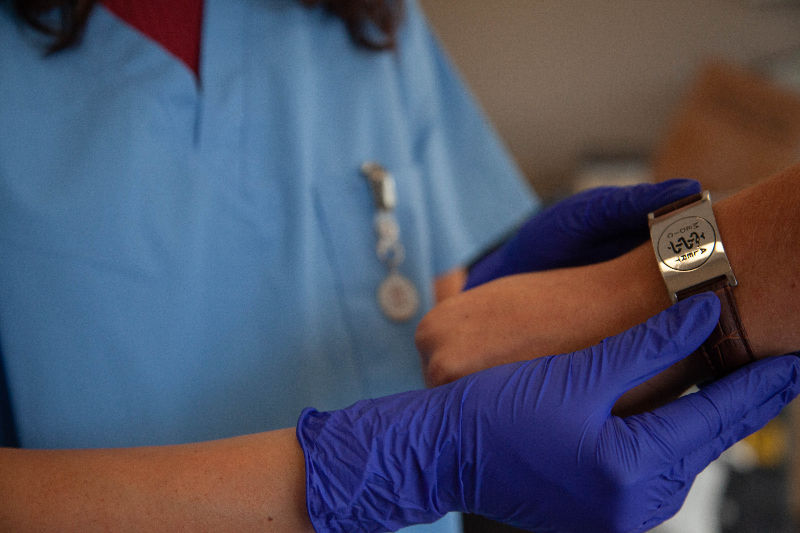How Does Trauma Affect the Body?
- Jun 28, 2021
- 11 min read
Updated: Oct 23

Navigating the long-term aftermath of trauma can feel overwhelming, especially when the symptoms manifest physically. We have thoroughly investigated the intricate relationship between psychological trauma and its deep-seated biological effects, and we know exactly how these experiences create a persistent state of physical distress in the body. You can trust that the insights presented here offer a clear, definitive map to understanding the silent, yet powerful, language of your body as it moves toward healing.
What is the core, physiological response that causes persistent physical symptoms long after a traumatic event is over?
The core physiological response is the chronic dysregulation of the autonomic nervous system, leading to a state known as hyperarousal. This keeps the brain's alarm center, the amygdala, constantly overactive, strengthening fear pathways and locking the body into a continuous fight, flight, or freeze survival mode.
We have only scratched the surface of how trauma affects your nervous system, sleep, relationships, and long-term health. Keep reading to dive into the specific, alarming physical manifestations of this chronic stress and explore actionable, body-focused strategies like Somatic Experiencing to finally reclaim your sense of physical safety.
Table of Contents
The Survival Blueprint: Trauma's Immediate Effect on the Nervous System
The Fight, Flight, Freeze, and Fawn Responses
The Brain's Stress Circuitry and Altered States
Physical Effects of Trauma: More Than Just Muscle Tension
Chronic Pain and Musculoskeletal Issues
Impact on Cardiovascular and Immune Systems
Gastrointestinal and Metabolic Disturbances
The Long Game: How Does Trauma Affect the Body Long Term
Neuroplasticity and the Hyper-Alert Brain
Emotional Numbness and Physical Dissociation
The Challenge of Complex Post-Traumatic Stress Disorder (CPTSD)
Body-First Healing: Somatic and Mindfulness Practices
The Power of Somatic Experiencing (SE)
Breathing Techniques for Nervous System Regulation
The Importance of Nutrition and Movement
Reclaiming Resilience: Building a Personalized Recovery Plan
The Role of Internal and External Support
Cultivating a Felt Sense of Safety
Frequently Asked Questions (FAQ)
The Survival Blueprint: Trauma's Immediate Effect on the Nervous System
When a person faces a traumatic event, the body's ancient, non-negotiable survival system takes the lead. This immediate, automatic response is not a choice; it is a rapid, protective physiological cascade meant to save your life. For a clear understanding of how does trauma affect the body, we must first look at the nervous system and trauma.
The Fight, Flight, Freeze, and Fawn Responses
Your body's initial reaction to a perceived threat is controlled by the sympathetic nervous system, the body's gas pedal. This activation triggers the well-known fight-or-flight response. Adrenaline and cortisol surge, increasing heart rate, blood pressure, and respiratory rate, preparing the muscles for explosive action.
However, survival is more complex than just fighting or running away. Trauma specialists now recognize four primary, hardwired defensive reactions:
Fight: Manifests as agitation, anger, aggression, or a need to control the situation.
Flight: Results in intense panic, physical restlessness, hypervigilance, and a compulsive urge to escape or avoid.
Freeze: An involuntary state of immobilization, where the body goes into a "play dead" mode. This can include feeling trauma-induced paralysis, disconnection, or a sudden, profound sense of calm that is actually a biological shutdown.
Fawn: A complex trauma response where a person attempts to appease or please the threat or abuser to avoid further harm.
The Brain's Stress Circuitry and Altered States

Trauma fundamentally reshapes the brain's fear circuitry. Specifically, the amygdala, the brain's alarm center, becomes chronically overactive. It starts flagging benign situations, sounds, or people as dangerous, leading to a constant state of hyperarousal. This is a key insight into how does PTSD affect the body, as it explains the persistent feelings of being easily startled or "always on guard."
Simultaneously, the prefrontal cortex, the area responsible for rational thought, planning, and emotional regulation, can become less responsive. This disruption is a protective measure in the moment of trauma, but its long-term impact means a person may struggle with:
Memory Problems: The brain encodes memories differently under extreme stress, often resulting in fragmented, non-chronological memories, or an inability to recall important aspects of the event. This is why trauma and memory loss are closely connected.
Dissociation: A survival reflex where the person feels detached from their body, their emotions, or their surroundings. It's a mental escape when a physical one is impossible.
Physical Effects of Trauma: More Than Just Muscle Tension
The long-term physiological changes stemming from trauma can evolve into persistent physical symptoms, making the question of how does emotional trauma affect the body an inquiry into chronic health. Chronic activation of the stress response, known as allostatic load, wears down the body's regulatory systems, essentially keeping the body in a state of guardedness.
Chronic Pain and Musculoskeletal Issues
The body holds stress. Chronic stress from trauma can settle into your muscles and tissues, maintaining them in a taut, tense state long after the perceived danger has passed. This constant tension, often unseen, manifests as
Tension Headaches and Migraines: Directly linked to chronic muscle tension in the shoulders, neck, and head.
Persistent Aches and Pains: Generalized muscle pain, backaches, or unexplained joint soreness that does not respond to typical pain relief.
Fibromyalgia and Chronic Fatigue: These conditions are frequently observed in individuals with a history of trauma, suggesting a deep connection between the body’s inability to reset its survival response and the onset of chronic, widespread pain.
Impact on Cardiovascular and Immune Systems
The continuous flood of stress hormones takes a toll on the heart and the immune system.
Cardiovascular Issues: Sustained high levels of adrenaline and cortisol can contribute to increased blood pressure (hypertension) and elevated heart rate, significantly raising the long-term risk of cardiovascular disease and stroke.
Immune System Dysregulation: Chronic stress suppresses the immune system's ability to respond effectively. This leaves the body more vulnerable to infections and potentially contributes to autoimmune and inflammatory conditions.
Gastrointestinal and Metabolic Disturbances
The nervous system that controls your stress response (the autonomic nervous system) is intricately linked to your gut, leading to the colloquial term "the gut-brain axis."
Digestive Distress: Anxiety and hypervigilance can dramatically alter digestion, leading to symptoms like stomach upset, irritable bowel syndrome (IBS), or chronic acid reflux.
Appetite Changes: Trauma can profoundly affect one’s diet, leading to severe weight gain or severe weight loss. This emotional impact on nutrition, coupled with potential body dysregulation, further inhibits the body's healing capacity.
The Long Game: How Does Trauma Affect the Body Long Term
The endurance of trauma's physical footprint is what makes it a chronic health issue. The question, how does trauma affect the body long term, directs us toward enduring alterations in a person's physical and psychological landscape.
Neuroplasticity and the Hyper-Alert Brain
The brain is incredibly adaptable, a trait known as neuroplasticity. Unfortunately, after trauma, the brain adapts to a reality of constant danger. This means the neural pathways associated with fear and vigilance are strengthened, causing the sympathetic nervous system to remain hyper-responsive. Small, everyday stimuli become trauma triggers that launch the individual into a full-blown stress response, complete with physical reactions like sweating, rapid breathing, or a racing heart.
These physical symptoms can be interpreted by the person as a sign of current danger, creating a self-reinforcing trauma avoidance cycle that keeps the nervous system locked in survival mode.
Emotional Numbness and Physical Dissociation
To cope with overwhelming or persistent danger, the body and mind may resort to emotional numbness as a protective mechanism. This detachment, which can feel like feeling disconnected or numb, can extend to the body.
Loss of Interoception: A reduced ability to perceive internal bodily signals, such as hunger, thirst, or internal discomfort. This contributes to self-neglect and difficulty regulating basic needs.
Physical Manifestations: For some, this dissociation leads to a high tolerance for pain or a feeling that the body is not fully their own. The physical self becomes a vessel to be managed, rather than a resource to be protected.
The Challenge of Complex Post-Traumatic Stress Disorder (CPTSD)
When trauma is long-term, repeated, or relational, such as in cases of chronic abuse or domestic violence, a person may develop Complex Post-Traumatic Stress Disorder (CPTSD). While sharing core symptoms with PTSD (intrusive thoughts, hypervigilance, and avoidance),
CPTSD often includes pervasive affective dysregulation (extreme emotional reactivity, anger, or aggressive behavior), a persistent negative sense of self (shame, guilt, worthlessness), and severe difficulties in forming and maintaining meaningful relationships. The trauma, in these cases, deeply impacts the core sense of self and the capacity for emotional regulation, compounding the physical toll.
Body-First Healing: Somatic and Mindfulness Practices
Healing from trauma must be a mind-body connection process, recognizing that what the mind struggled to process is now trapped in the nervous system. Addressing the physical effects is paramount. This requires a bottom-up processing approach that starts with the body's sensations, rather than solely relying on cognitive behavioral strategies.
The Power of Somatic Experiencing (SE)
Somatic Experiencing (SE), a body-focused therapeutic approach, is specifically designed to help the nervous system complete the thwarted, frozen defensive responses from the past.
Titration and Pendulation: The therapist guides the person to work with the trauma in small, manageable pieces (titration), and to alternate between activated, uncomfortable sensations and sensations of calm or safety (pendulation). This allows the nervous system to gradually release trauma-related tension stored in the body without overwhelming the person.
Tracking: Learning to pay close, non-judgmental attention to physical sensations (interoception) is key. By simply observing a racing heart or a knot in the stomach, a person can start to realize that these sensations are not signs of current danger, but rather physical reactions from the past, thus calming the overactive amygdala.
Breathing Techniques for Nervous System Regulation
Simple, focused mindfulness practices can be incredibly effective at signaling safety to the brain and body. Deep, slow, diaphragmatic breathing activates the parasympathetic nervous system, the body's brake pedal, promoting a state of "rest and digest."
Box Breathing: A technique (breathe in for four, hold for four, breathe out for four, hold for four) that provides an anchor in the present moment, helping to interrupt the cycle of hyperarousal and panic.
Grounding Techniques: Shifting attention to present-moment sensory input (e.g., feeling feet on the floor, naming objects in the room) can anchor a person who is dissociating or having a flashback. This reinforces the brain's awareness that the trauma is not currently occurring.
The Importance of Nutrition and Movement
To provide the body with the resources it needs for recovery, consistent attention to physical health is vital.
Nutritious Diet: A balanced diet supports the physical repair of tissues, nerve function, and brain chemistry. Proper nutrients help the body maintain stable energy levels, crucial for engaging in other experiential therapies.
Physically Active Recovery Routes: Gentle movement, such as trauma-informed yoga, walking, or stretching, helps release chronic muscle tension and allows the body to complete the physical actions it was unable to finish during the trauma. Getting the body moving and being more introspective about one’s physical state can highlight symptoms that may have been previously overlooked.
Reclaiming Resilience: Building a Personalized Recovery Plan
Healing is possible, but it demands patience and a personalized strategy that respects how trauma affects the body. The goal is not to eliminate the memory of the trauma, but to process the accompanying emotional and physical charge, integrating the experience so it becomes a memory, not a recurring physical event.
The Role of Internal and External Support
Building a network of support is essential.
Therapeutic Alliance: Working with a trauma-informed therapist who understands the intricacies of the neurobiology of trauma is paramount. Modalities like Somatic Experiencing, Trauma-Focused Cognitive Behavioral Therapy (TF-CBT), or Eye Movement Desensitization and Reprocessing (EMDR) can be highly effective.
Community and Relationships: Connecting to others face to face in a safe environment helps counteract the feeling of isolation and detachment that trauma often creates. Healthy relationships teach the nervous system that the world is not solely dangerous.
Cultivating a Felt Sense of Safety
Ultimately, recovery is about cultivating a deep, internal felt sense of safety. This is a core mind-body connection concept in healing.
Practice Self-Compassion: Recognize that your reactions are a normal, protective response to an abnormal event. Symptoms are a sign your body has been working hard to survive, not a sign of personal failure or weakness.
Develop Somatic Resources: Identify and focus on feelings of strength and calmness in the body. This could be a solid connection to the ground, a relaxed jaw, or a sense of warmth in the chest. These become internal anchors that you can draw upon when a physical response to a trigger arises.
By combining psychological work with intentional mindfulness practices and somatic awareness, you move toward a state of post-traumatic growth, transforming the physical effects of trauma from a lifelong sentence into a testament of your profound resilience.
Frequently Asked Questions (FAQ)
• What are some of the most common physical symptoms of unresolved trauma?
Physical symptoms of unresolved trauma can include chronic widespread aches and pains, persistent muscle tension (especially in the neck, shoulders, and jaw), severe fatigue, sleep disturbances (insomnia or nightmares), digestive issues (like IBS), hypertension, being easily startled (hypervigilance), and a racing heartbeat or sweating when not physically exerting yourself.
• How does trauma change the nervous system?
Trauma can cause the autonomic nervous system to become chronically dysregulated. The sympathetic nervous system (fight/flight) remains overly activated (hyperarousal), making the person constantly feel anxious or on edge. Simultaneously, the parasympathetic nervous system (rest/digest) may not be able to effectively bring the body back to a calm, safe baseline, or it may trigger a sudden shutdown (freeze or flop response) when overwhelmed.
• Can emotional trauma cause physical illness?
Yes, emotional trauma can significantly contribute to the development of physical illness. The chronic stress response elevates hormones like cortisol and adrenaline, which over time, lead to an increased risk of chronic conditions such as cardiovascular disease, hypertension, type 2 diabetes, and potentially contribute to inflammatory and autoimmune disorders. The high allostatic load physically wears the body down.
• What is Somatic Experiencing (SE) and how does it help?
Somatic Experiencing (SE) is a body-first therapy aimed at healing trauma by helping the individual become aware of and complete the physical, defensive responses (fight, flight, freeze) that were trapped in the nervous system during the traumatic event. It uses techniques like tracking bodily sensations and gentle, incremental re-exposure (titration) to allow the body to discharge stored stress and restore the nervous system's ability to self-regulate.
•What does it mean that the trauma is "stored in the body"?
This phrase means that the intense emotional and physiological energy of a traumatic event, which was unable to be fully completed or discharged at the time, is held as chronic tension, bracing, or dysregulation in the body's nervous system and muscles. It's why trauma and chronic pain are so often linked; the pain is the physical manifestation of the unresolved defensive energy being held captive. The body, in effect, "keeps the score."
Experiencing the physical effects of trauma can be a lonely and challenging journey, but you don't have to navigate it alone. We understand how these symptoms can impact every aspect of your life, and at Chateau Health and Wellness, we are committed to providing a supportive environment where healing is possible. Our team of professionals is dedicated to helping you create a personalized recovery plan that addresses both the mental and physical aspects of your trauma. We invite you to take the first step toward a healthier future with us. To learn more about our comprehensive treatment options and how we can support you, please reach out to us at (801) 877-1272. We are here to help you on your path to recovery.

About The Author
Ben Pearson, LCSW - Clinical Director
With 19 years of experience, Ben Pearson specializes in adolescent and family therapy, de-escalation, and high-risk interventions. As a former Clinical Director of an intensive outpatient program, he played a key role in clinical interventions and group therapy. With 15+ years in wilderness treatment and over a decade as a clinician, Ben has helped countless individuals and families navigate mental health and recovery challenges.
Danny Warner, CEO of Chateau Health and Wellness
Brings a wealth of experience in business operations, strategic alliances, and turnaround management, with prior leadership roles at Mediconnect Global, Klever Marketing, and WO Investing, Inc. A graduate of Brigham Young University in Economics and History, Danny has a proven track record of delivering results across diverse industries. His most transformative role, however, was as a trail walker and counselor for troubled teens at the Anasazi Foundation, where he directly impacted young lives, a personal commitment to transformation that now drives his leadership at Chateau.
Austin Pederson, Executive Director of Chateau Health and Wellness
Brings over eight years of experience revolutionizing mental health and substance abuse treatment through compassionate care and innovative business strategies. Inspired by his own recovery journey, Austin has developed impactful programs tailored to individuals facing trauma and stress while fostering comprehensive support systems that prioritize holistic wellness. His empathetic leadership extends to educating and assisting families, ensuring lasting recovery for clients and their loved ones.










